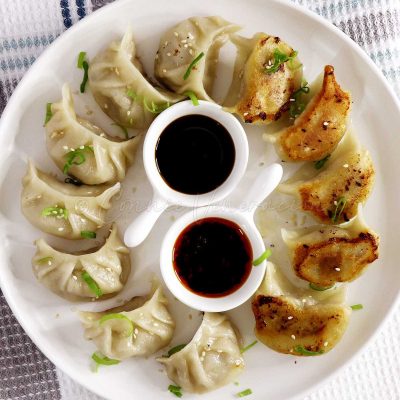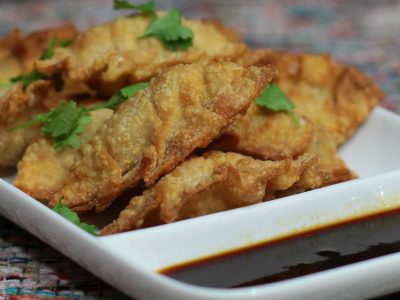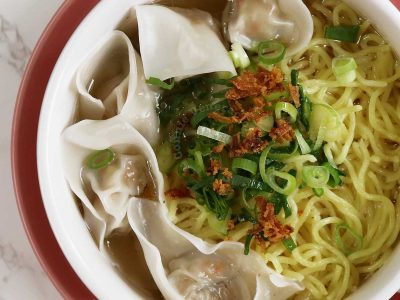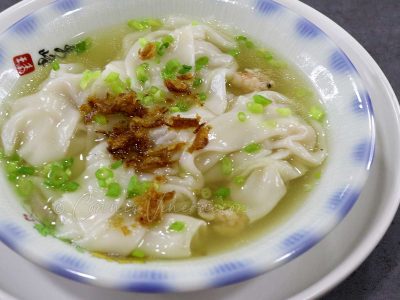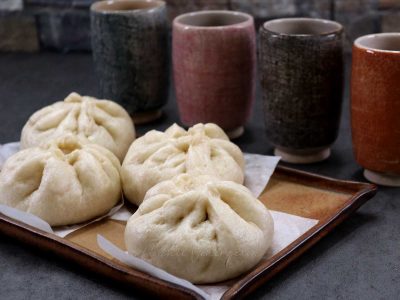First, you have to make the dumplings. See the gyoza recipe for a complete guide.
Gyoza
Japanese dumplings adapted from the Chinese jiaozi, gyoza may be pan-fried, steamed or deep fried. If pan-fried, gyoza may be cooked with or without wings.
When the dumplings have been formed, the process of cooking them into gyoza with wings is pretty much the same as pan frying gyoza except for the addition of starch dissolved in water to make a light crust at the bottom.
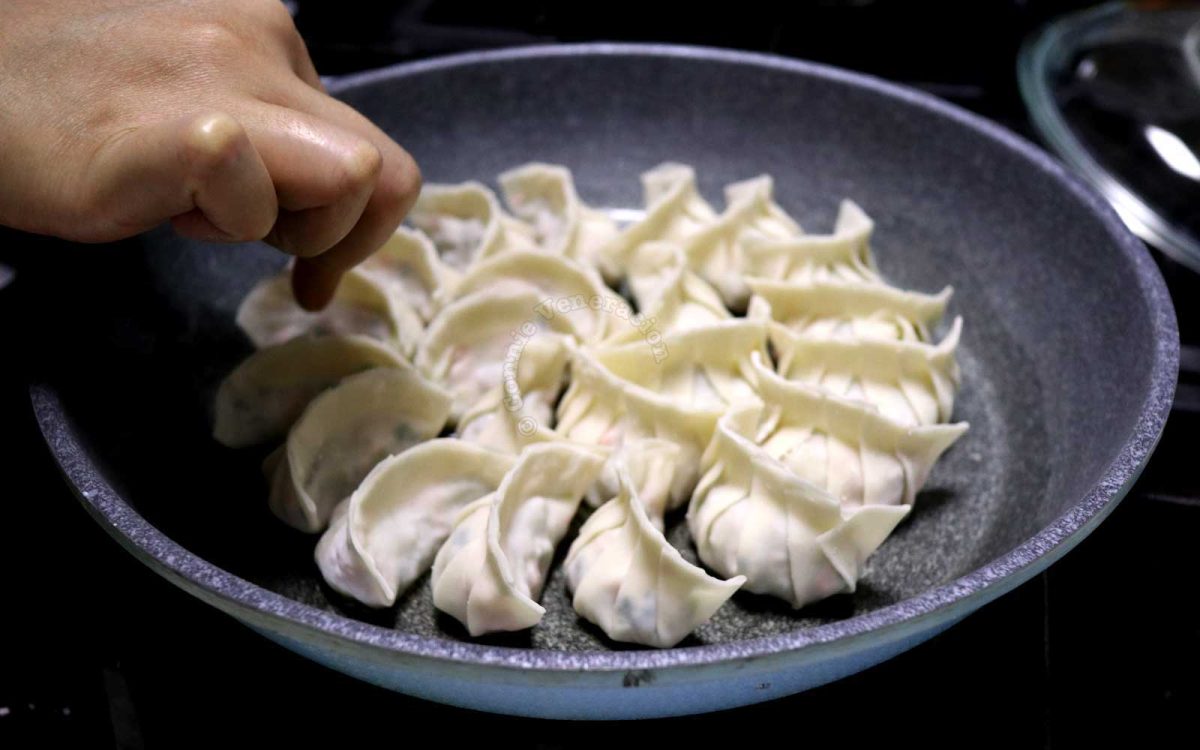
Set a non-stick pan on the stove over medium heat then pour two tablespoons sesame seed oil into the pan. Swirl the pan to allow the oil to coat the bottom evenly.
Arrange the gyoza in the pan so that they are about half an inch from each other. How many pieces of gyoza? That depends on the size of your frying pan. So long as there is a half-inch distance between the dumplings when they are arranged in the pan, “wings” will form correctly.
Cover the pan and cook the gyoza until the bottoms are lightly browned and firm.
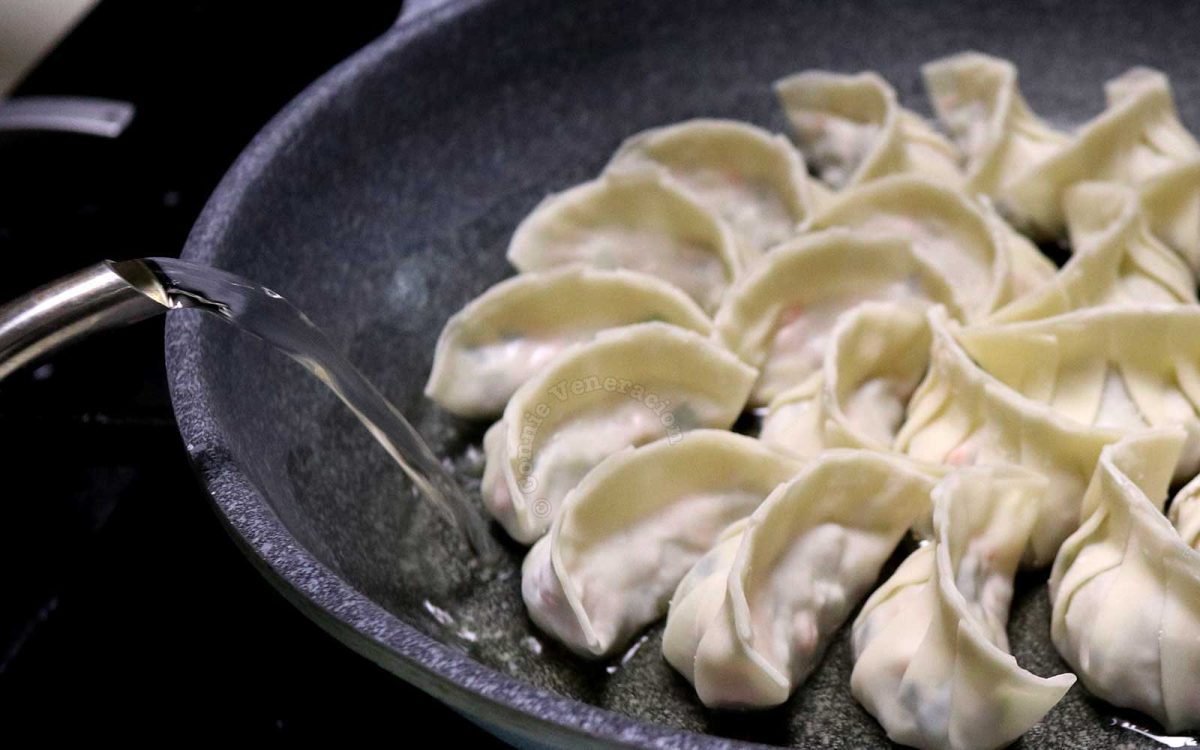
Pour a quarter cup of water around the dumplings. Be careful not to pour water directly on them. Cover the pan and allow the gyoza to fully cook in the steam. The dumplings are done with the water has evaporated and you can hear the oil start to sizzle.
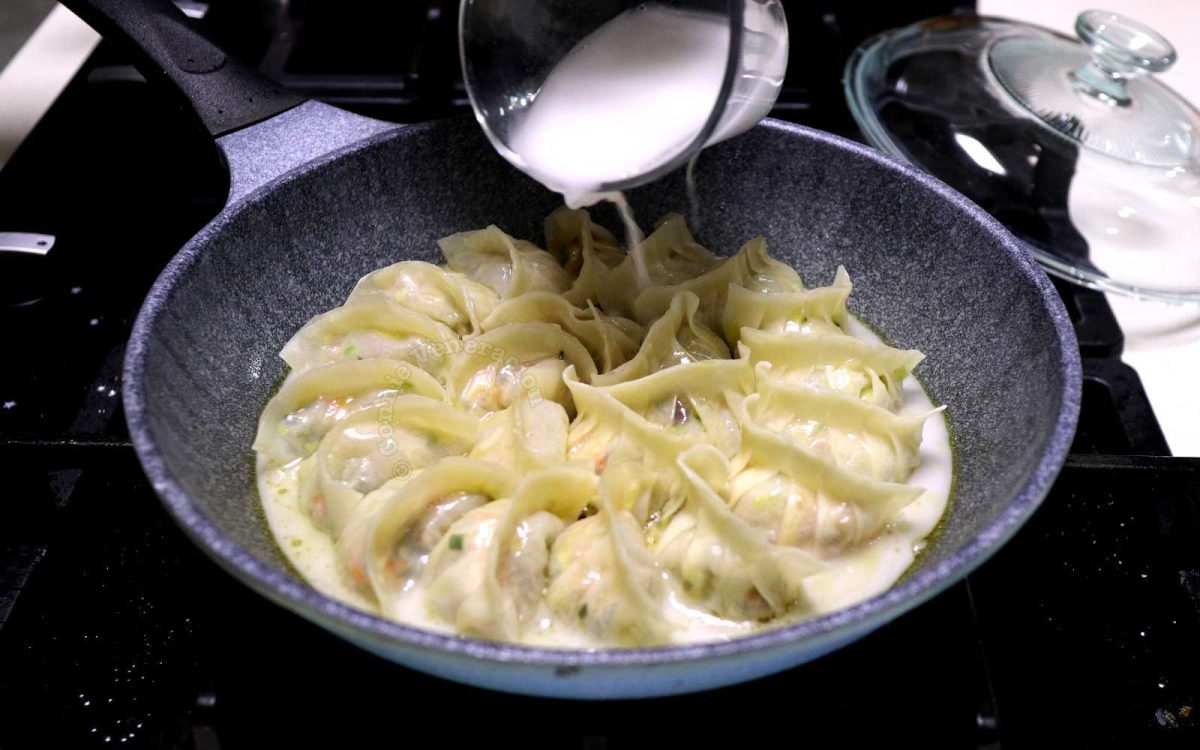
Stir a tablespoon of potato or corn starch into half a cup of water and pour the mixture and pour around the edge of the pan.
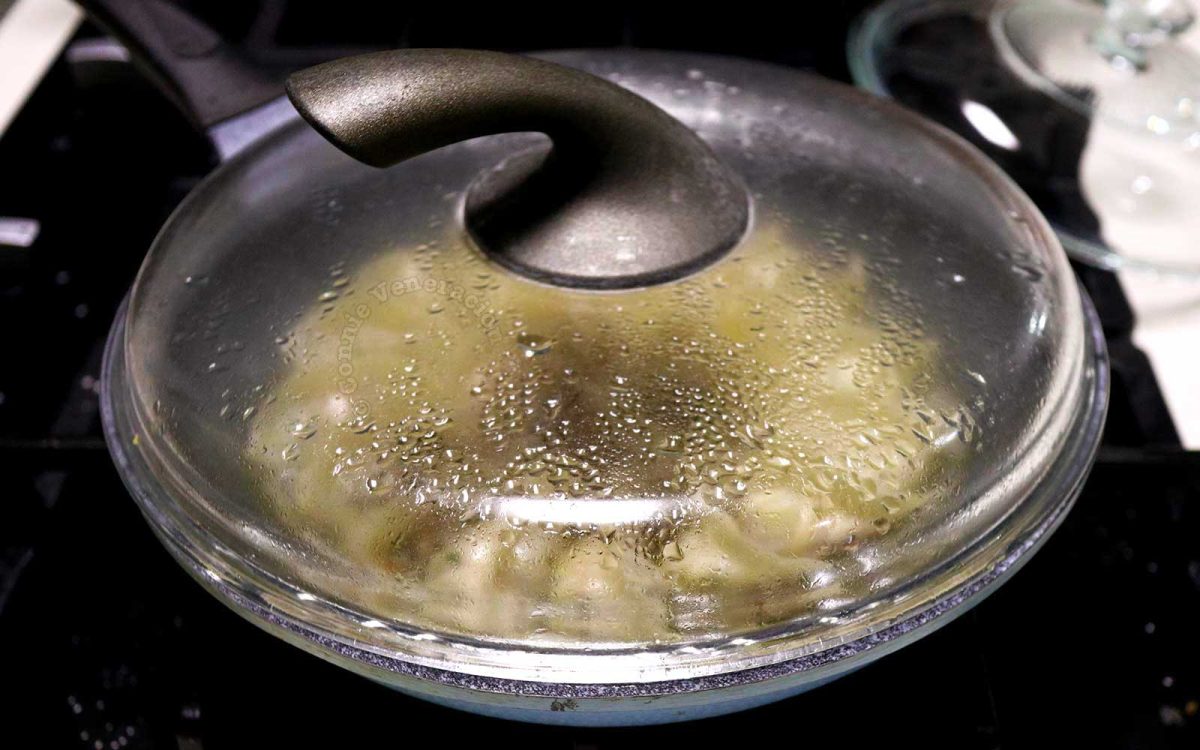
Cover the pan once more and cook the gyoza until the water-starch solution has solidified and “wings” have formed between the dumplings.
Drizzle the remaining tablespoon of sesame seed oil along the outer edges of the “wings” for extra crisp. If you can manage to partially lift the gyoza to allow the oil to get to spread underneath, so much the better. When the oil sizzles, the gyoza with wings are done.
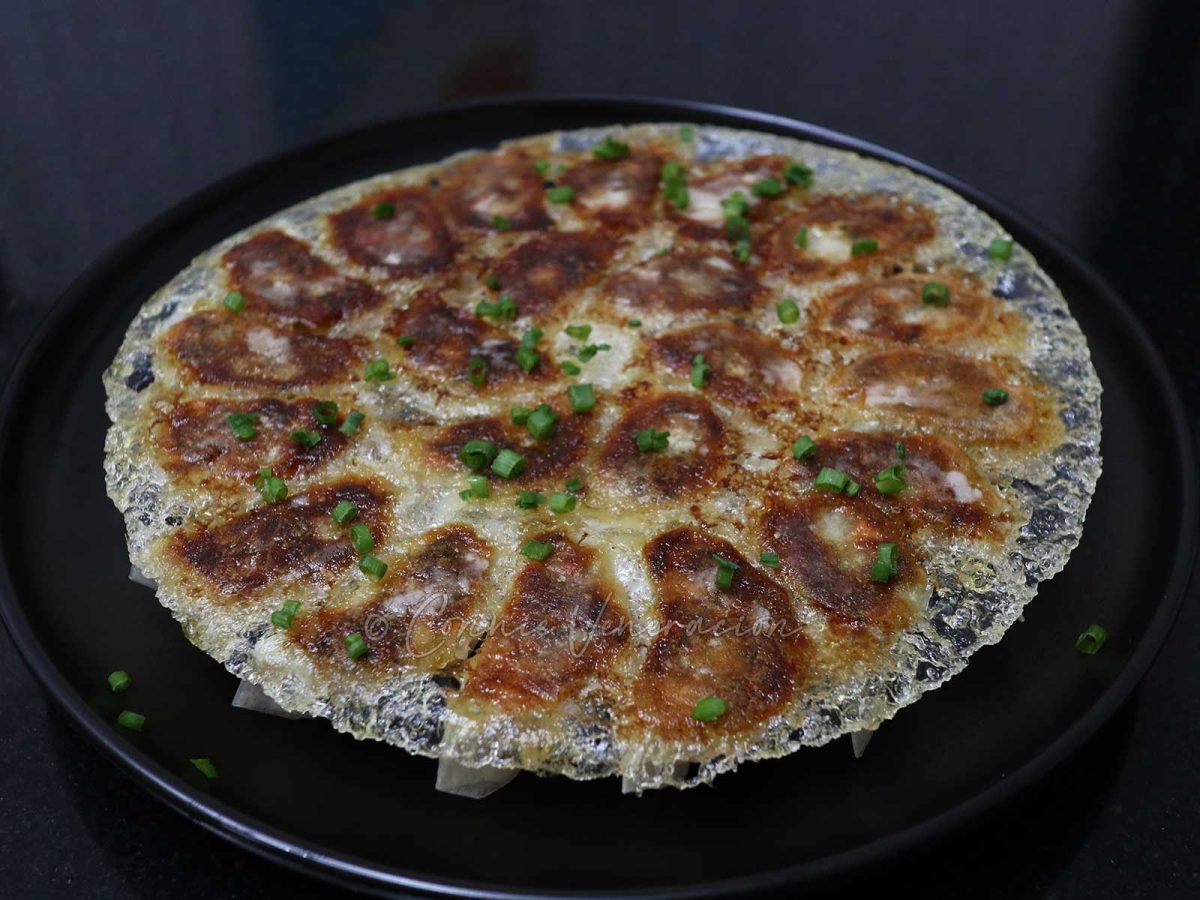
Position a plate upside down over the pan then invert the gyoza on the plate.
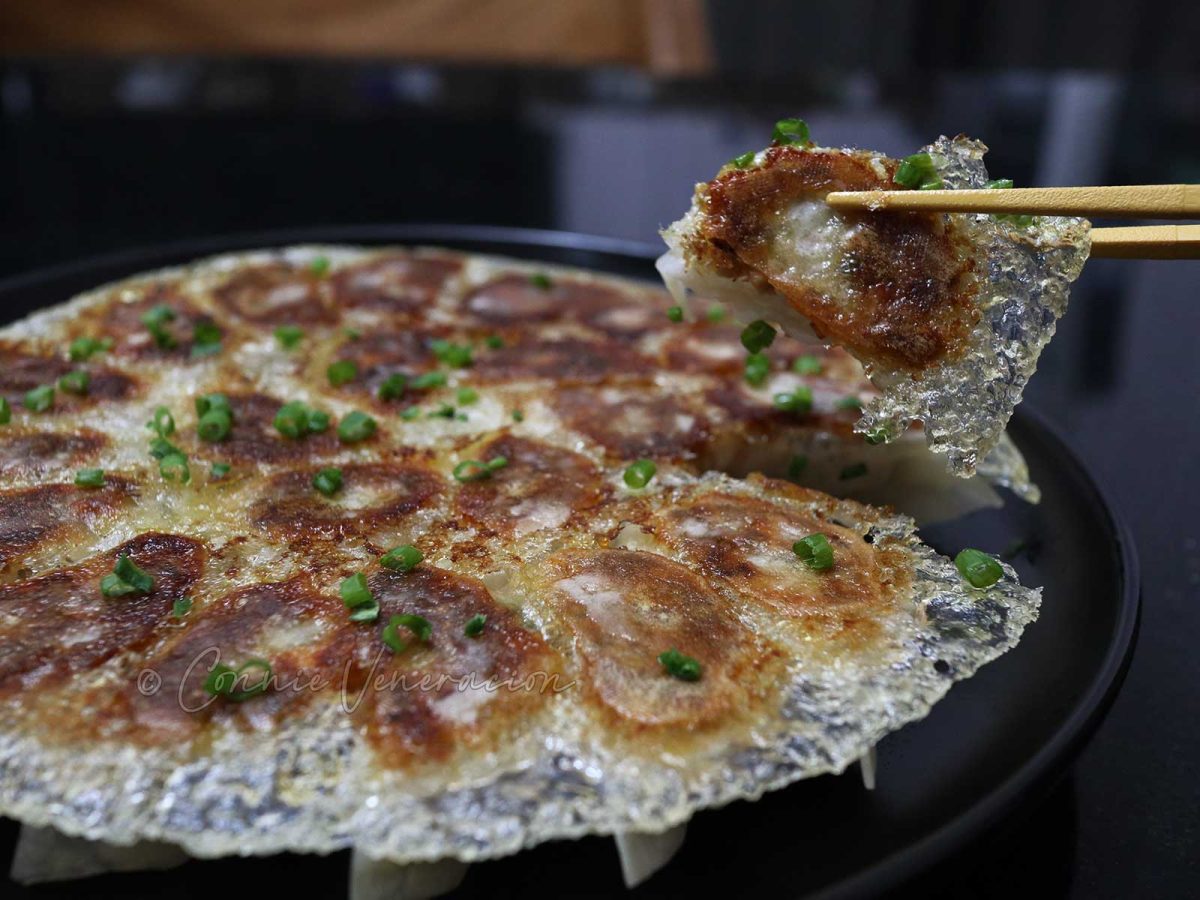
Use chopsticks to break the “wings” between the dumplings before picking up a piece.

